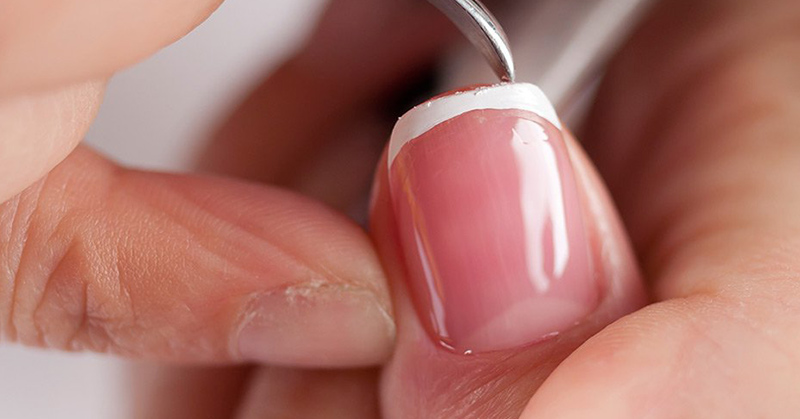Gel manicures have become the preferred nail manicure for many women these past few years instead of the traditional polish that has been around since the early 1900s. One of the reasons being that gel manicure lasts 2-3 times longer than a regular manicure (up to 4 weeks), and they keep their shiny and chip-free finish until you remove them.
It sounds well and harmless, right? Well actually, gel manicures can last that long because nails sit under an ultraviolet (UV) light multiple times throughout the manicure process and that allows the gel to dry faster. If you’re someone who often gets gel manicures, just think about the number of times your nails have been exposed to (UV) radiation.
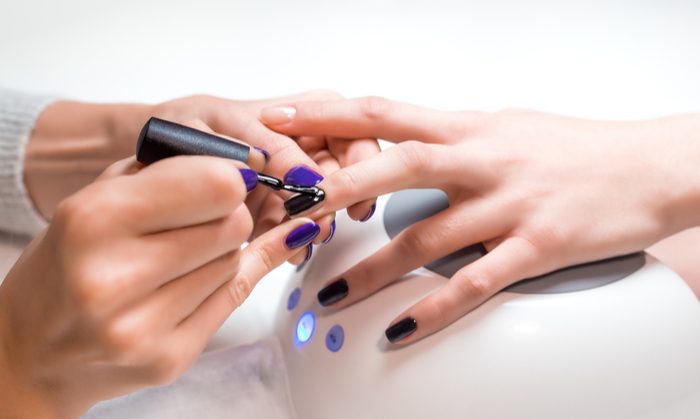
Take the story of Lauren Ann’s best friend who routinely got her gel manicure done and developed a skin cancer called melanoma from it.
She said, “One of my very best friends in the world got gel manicures regularly, like many of us. Prior to her diagnosis I hadn’t put too much thought into the dangers of the UV light so close to the fingers/nails, especially with some fairly newer chemical compound on them. She no longer has this thumbnail because THANK GOD she was smart enough to go to a dermatologist, and he diagnosed her with a rare form of cancer and did surgery. Although she very much misses her 10th nail, she is lucky it did not spread.”
Lauren Ann’s best friend caught the skin cancer before it spread elsewhere and she warns everyone else who frequently enjoys getting gel manicure done to be mindful of the harmful negative effect of UV radiation.
Evidence from Research: Are Nail Lamps Really Linked to Skin Cancer?
It’s very much worth noting that some research has been done to answer the specific question of whether UVA rays from nail curing lamps are strong enough to pose a skin cancer threat. A great deal of the research that has concluded that nail lamps are in fact safe for regular use are actually conducted and funded by conglomerates in the nail and beauty industry.
One very notable figure includes the Schoon Scientific team, who have, according to the Co-Chair of the Nail Manufacturers Council (NMC), and Creative Nail Design’s (CND) Chief Scientist, Doug Schoon, “have spent many years developing some of the leading UV nail products in the world, and [I] am also one of the top scientific experts on UV nail lamps.” At The Hearty Soul, we believe it is important to pay attention to the potential for conflict of interest that stems from funding sources in research studies.
In contrast, the Skin Cancer Foundation Senior Vice President Elizabeth K. Hale, MD has released a report about the risks of nail lamps, saying:
“Ultraviolet radiation-emitting nail lamps have become a regular part of most trips to the nail salon, causing many patrons to question manicure safety. These lamps are typically used to speed-dry regular manicures, and they are actually necessary to set gel manicures. Some nail lamps are called “UV” lamps, and some are called LED lamps, but both emit UV radiation. They predominantly produce UVA rays, which have been linked to both premature skin aging and skin cancer. However, even the most intense of these devices presents only a moderate UV risk – a far lower risk than that presented by UV tanning devices. To play it safe with gel manicures, The Skin Cancer Foundation recommends applying a broad spectrum (UVA/UVB) sunscreen to hands 20 minutes prior to UV light exposure. If getting a regular manicure, the safest bet is to allow nails to air-dry naturally, avoiding the drying lamps altogether. Remember, all nail lamps produce UV radiation.”
It is also worth noting, that although the FDA has also released a comment about nail lamp safety, guidelines for cosmetic products including nail lamps do not exist because the FDA does not oversee this realm. In their report, however, they do make note of a 2013 study that compared 30 minutes of exposure to a nail lamp with the legal limit for occupational UVA exposure, and concluded it to not exceed those levels. It is important to note, however, that this is not the same thing as conducting a longitudinal study of the long-term risks from regular exposure to nail lamps over the years.
The FDA has noted, however, that the following create increased sensitivity to UVA rays:
- Contraceptives
- Estrogen hormone medication
- Antibiotics
- A variety of lotions, skin products, and fragrances
- Some supplements including St. John’s Worts
Our conclusion?
There is more evidence from independent sources that suggest there is an increased risk of melanoma/skin cancer with regular use of UV/LED nail lamps that outweighs evidence from biased researchers that suggest there is not. We think it makes sense to err on the side of caution, and take simple steps to decrease your risk of cancer.
What is Melanoma?
Melanoma is the most common type of skin cancer in the US. It develops when damaged cells called melanocyte grow uncontrollably. Melanocyte cells contain a pigment called melanin, and they darken the skin when exposed to UV radiation from nail lamps, tanning beds, and the sun. (1)
Tanning beds, in particular, are especially damaging to the skin. The UV radiation can lead to premature skin aging and worst, skin cancer. In fact, people who use tanning beds before age 35 increase their risk of melanoma by 75 percent. (2)
Overexposure to UV light not only burns the skin but it damages melanocytes, and those cells can travel to other parts of the body. On average, 2 percent of the 3.5 million skin cancer diagnoses are melanoma, and it accounts for most skin cancer deaths. (3)
Symptoms and Treatment for Melanoma Skin Cancer
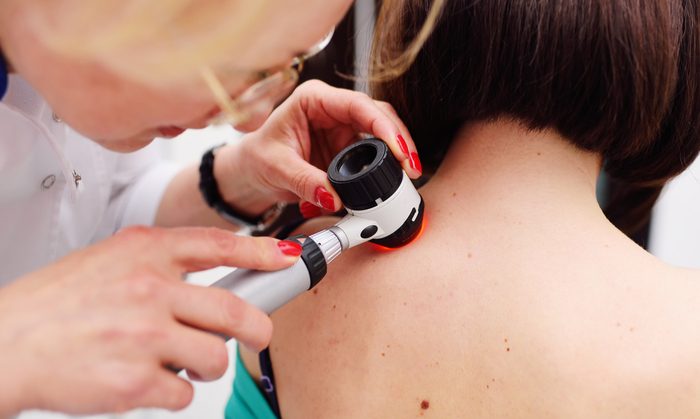
The ABCDE method may help you determine if an abnormal growth on your skin could be melanoma. (4)
- Asymmetry: The mole has an irregular shape.
- Border: The edge is not smooth, but irregular or notched.
- Color: The mole has uneven shading or dark spots.
- Diameter: The spot is larger than the size of a pencil eraser.
- Evolving or Elevation: The spot is changing in size, shape or texture.
The only way to be sure if a mole is a melanoma is to have it examined by a doctor.
Treatment for melanoma skin cancer varies depending on the stage that the cancer is at. Surgery to remove the cancer is often prescribed, and chemotherapy or radiation can also be necessary to remove the cancer cells. If you believe that you may have melanoma skin cancer, speak with your doctor to deduce the best and safest treatment for you.
Tips for the Safest Manicure
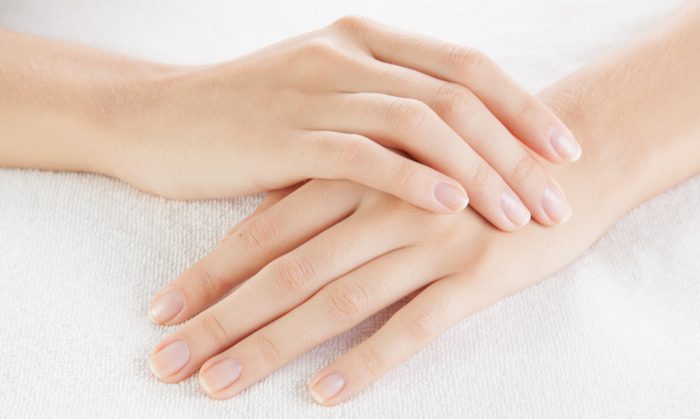
You probably think that from now on, you’ll switch to regular polish to avoid the dangers of gel nail polish when your nails are under the lamp. While that may seem like a better option, regular nail polish has its own dangers.
In a research study that tested for toxic chemicals in 24 women, 100% of the participants showed signs of triphenyl phosphate (TPHP) after 10 hours of applying nail polish. This statistic is alarming because TPHP disrupts the human endocrine system that controls our hormones and it poses serious health risks to anyone exposed to it.
What we recommend is to paint your nails with non-toxic polish. Brands like Zoya, Suncoat, and Honeybee Gardens are great options for non-toxic nail polish. Alternatively, you can choose the simple route and go polish-free. Buffing your nails and keeping them natural is the best way to go.
Conclusion
Be extremely mindful of your exposure to UV rays whether it’s through protecting your skin from the harmful rays of the sun, ditching the tanning beds, and opting for a safer nail care routine. Doing so will reduce your risks of skin cancer link melanoma.
If you want to know more about how you can protect your skin internally, here is a list of foods you should incorporate into your diet.
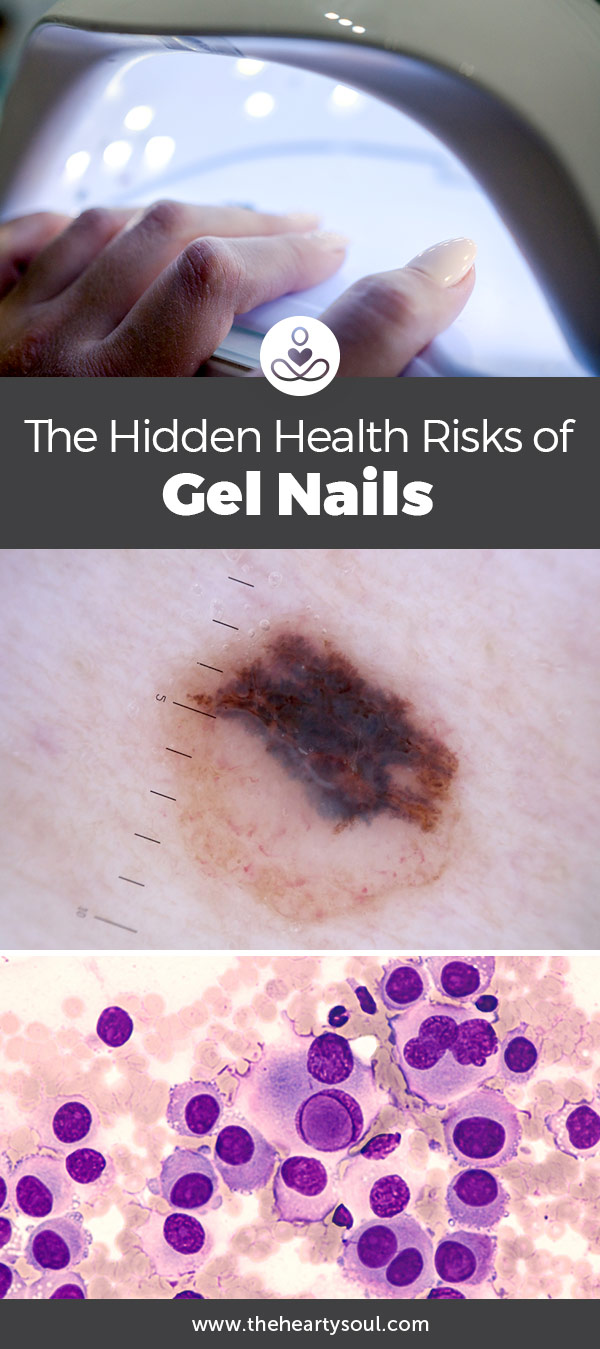
Sources
- (1, 3, 4) https://www.cancercenter.com/melanoma/questions/
- (2) https://www.skincancer.org/prevention/tanning
- https://www.skincancer.org/media-and-press/press-release-2013/nail-lamps
